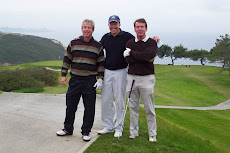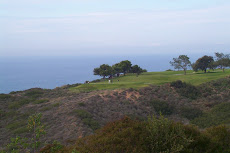The trend of lengthening golf courses to deal with the greater distances today's players hit the ball hasn't worked. But the solution to the problem can be seen this weekend if you watch the U.S. Senior Open at Sahalee Country Club in Sammamish, Wash.
It was fun watching the not-so-flat bellies struggle to tame the narrow, tree-lined beast during yesterday's first round. Some did manage to do so. Bruce Vaughan, who won a senior major with his 2008 Senior Open at Troon, shot a 66 even with a bogey on his final hole and has a two-shot lead over Loren Roberts and amateur Tim Jackson. Five players -- Bernhard Langer, Mark Calcavecchia, Joe Ozaki, Michael Allen and Tom Lehman -- are three shots off the lead. Tournament favorites Fred Couples and Tom Watson shot 70 along with Jay Haas and Scott Simpson.
But whether any of them are still in contention come Sunday is difficult to say. Because putting together four rounds of low scores at Sahalee is no small feat. One has to negotiate their way past thousands of trees framing famously narrow fairways that give even the straightest hitters a bad case of claustrophobia. And they have to do it four days in a row.
Most in the field came into the U.S. Senior Open having played in the Senior British Open last week at Carnoustie, one of the world's most difficult golf courses. Those who played last week in Scotland will feel like they are facing another monster, only this time the small shrubs and fescue grass have been replaced by 4-inch deep rough and a seemingly never-ending collection of cedar and fir trees.
If more golf course designers followed the lead of Ted Robinson, who designed Sahalee into a truly confounding course, talk of placing limits on golf club and ball technology wouldn't be necessary. But then most golf course designers don't have a mountain range forest to work with like Robinson had with his Seattle-area masterpiece.
Even so, it's worth thinking about for future golf course design. Instead of trying to Tiger-proof courses as Augusta National Golf Club tried to do by lengthening many of its holes after Woods brought the course to its knees with his 12-shot victory there in 1999, perhaps designers should make accuracy off the tee and from the fairway more crucial to success on the PGA Tour. Sahalee does so naturally because its built on a great piece of property. But new courses can do the same thing using different techniques -- more traps, water hazards or doglegs -- to reach the same desired effect.
A course shouldn't have to have 14 par 4s that are at least 440 yards long in order to stifle scoring. There are other ways of keeping the long bombers at bay. And this week's U.S. Senior Open at Sahalee is proof.
Information from Cybergolf and GolfObserver.com contributed to this post.
Fred Stenson's Canadian epic, The Trade
15 years ago







No comments:
Post a Comment